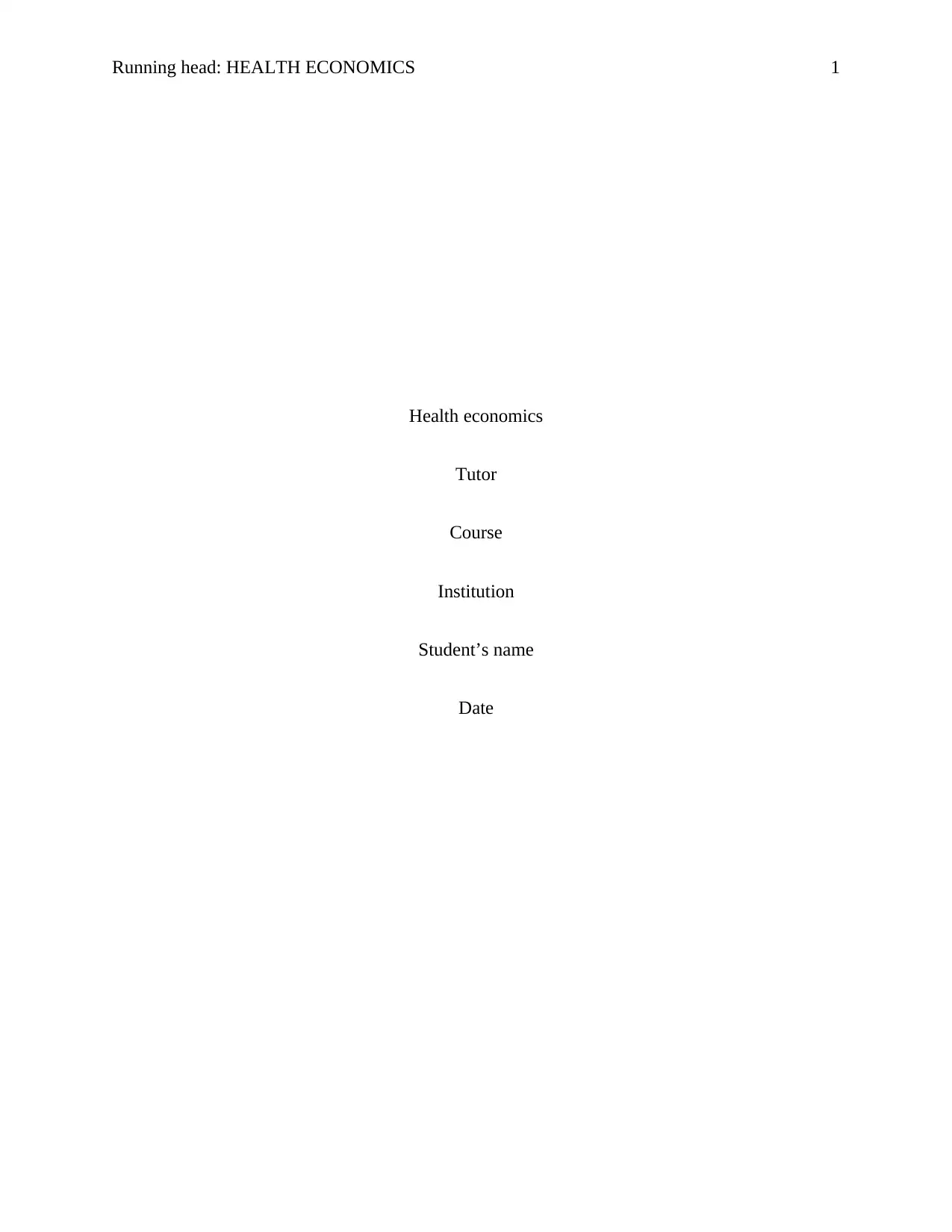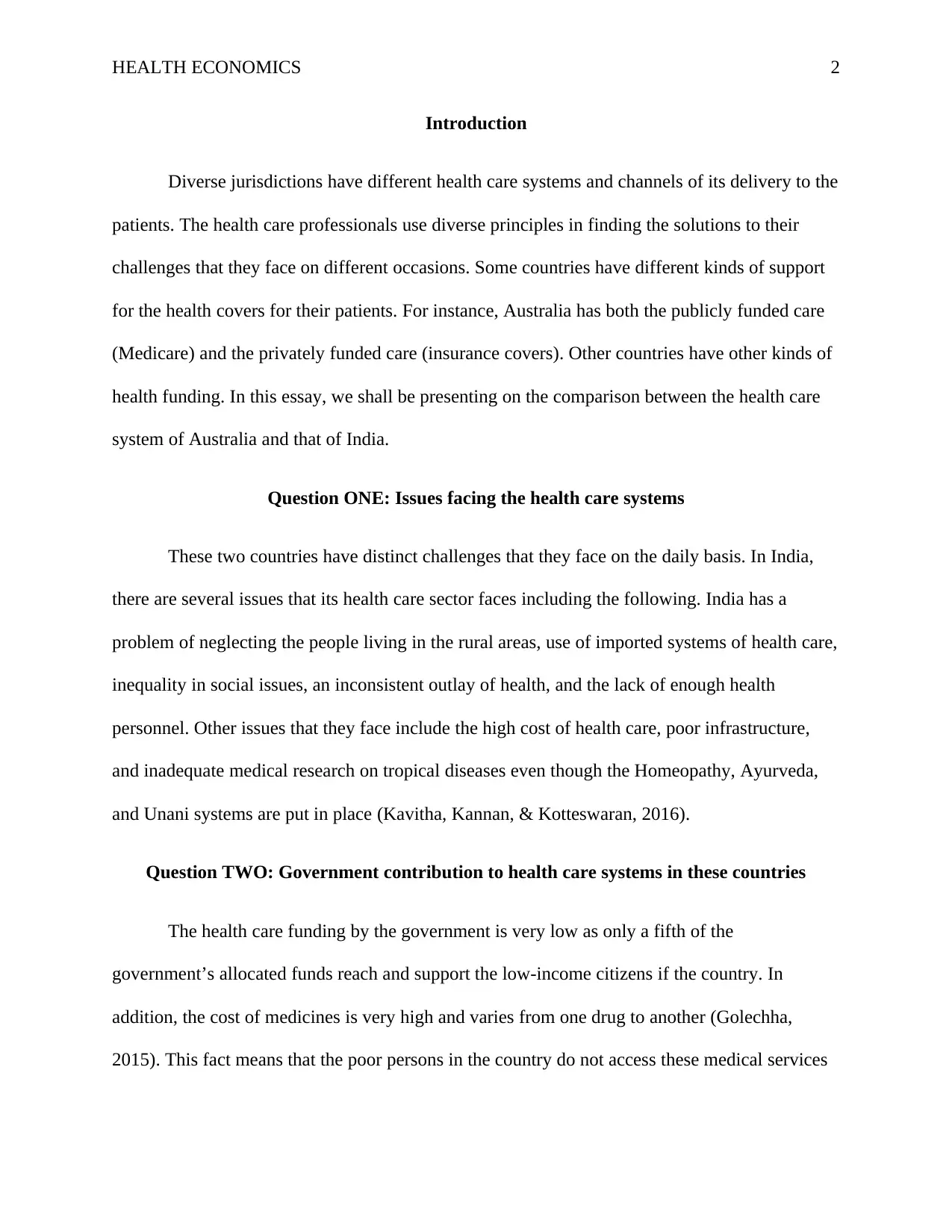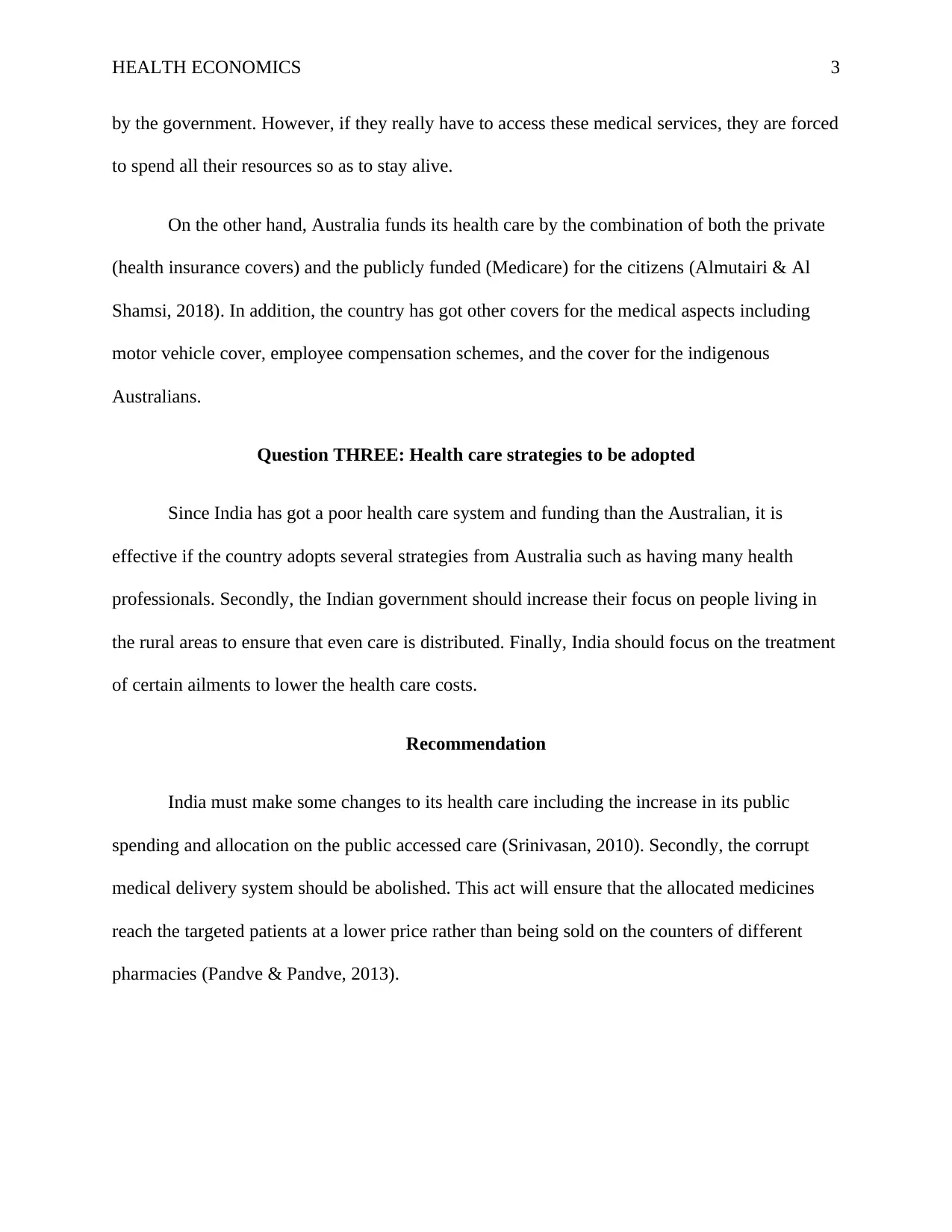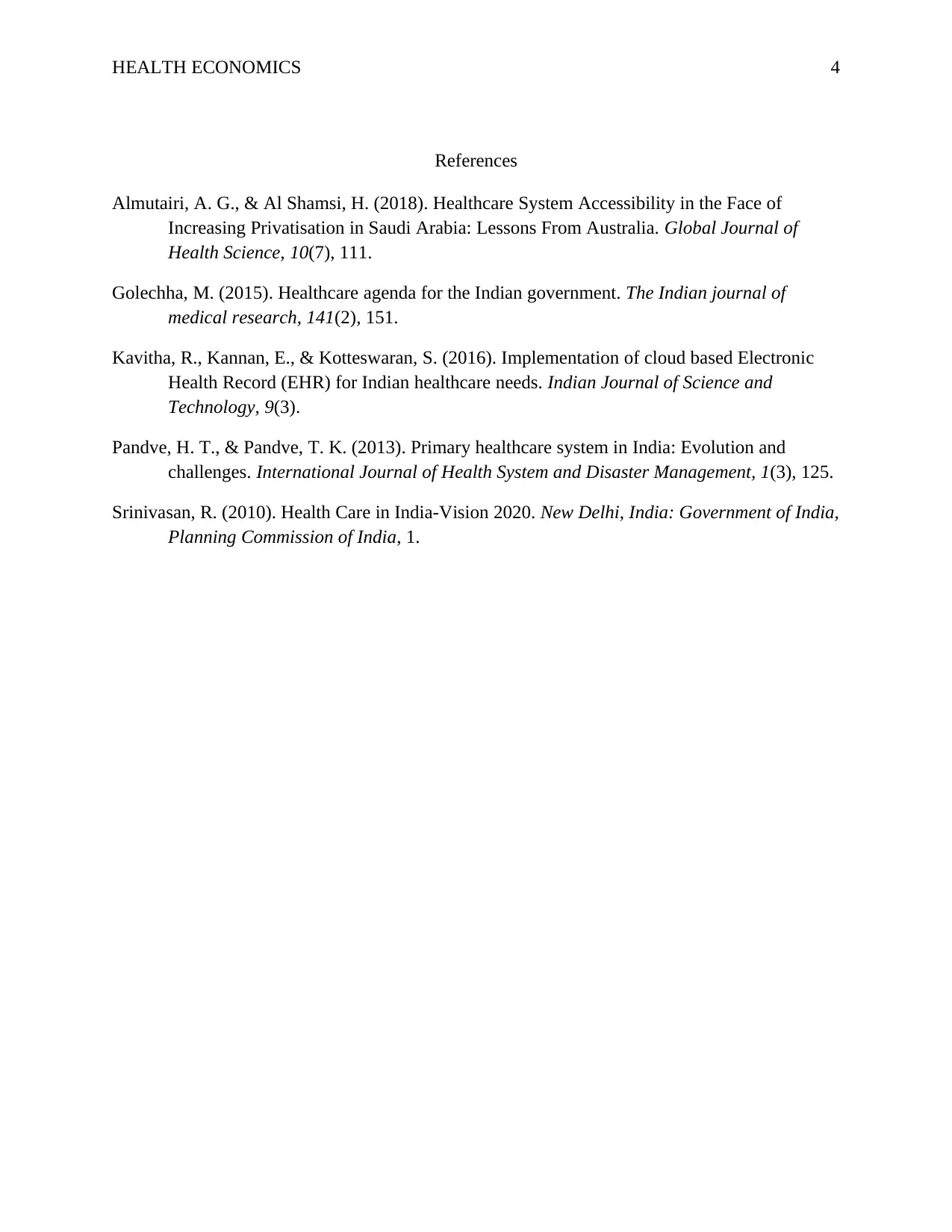Health Economics: Comparing Healthcare Systems of India and Australia
VerifiedAdded on 2023/06/05
|4
|789
|151
Essay
AI Summary
This essay provides a comparative analysis of the healthcare systems in India and Australia, highlighting the distinct challenges faced by each country. In India, issues such as neglect of rural populations, reliance on imported healthcare systems, social inequalities, inconsistent health outlays, and a shortage of healthcare personnel are discussed. The essay contrasts India's low government funding for healthcare with Australia's mixed public (Medicare) and private (health insurance) funding model. It recommends that India adopt strategies from Australia, such as increasing the number of healthcare professionals, focusing on rural healthcare, and prioritizing treatment for specific ailments to reduce costs. The essay concludes by advocating for increased public spending in India, the elimination of corruption in medical delivery, and ensuring that allocated medicines reach patients at affordable prices. Desklib provides access to similar solved assignments and past papers for students.
1 out of 4










![[object Object]](/_next/static/media/star-bottom.7253800d.svg)